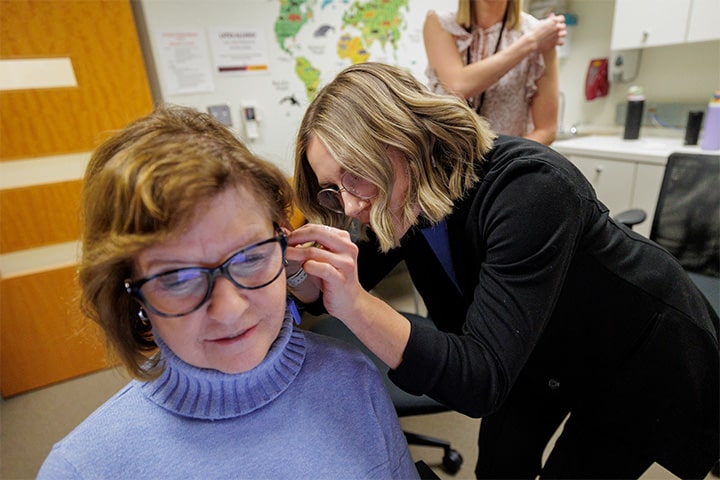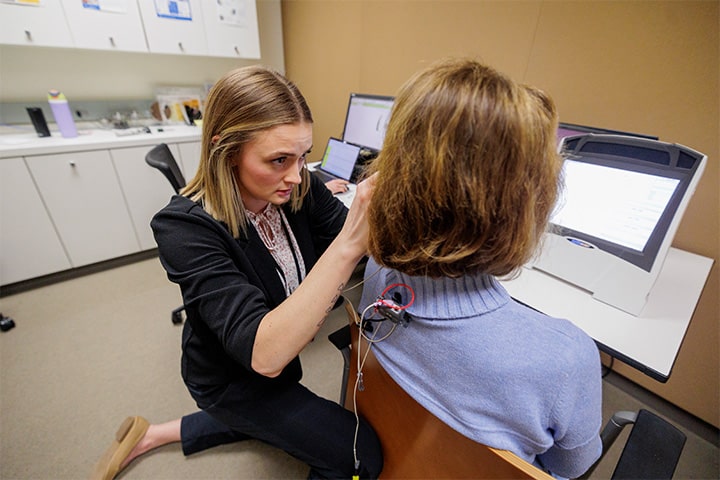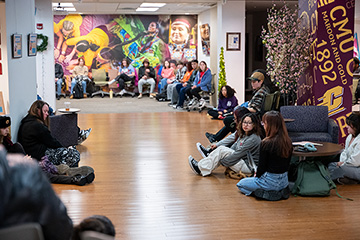Advancing Audiology: Investigating Patient Perception and Hearing Aid Fitting
Audiology students partner in research that may set guidelines to hearing aid fittings in the future
Paige Hunter and Amanda Brown have joined forces in their research, under the supervision of Dr. Yunfang Zheng, where they are looking at how a patient's perception may change based on how an audiologist fits a hearing aid. More specifically, they are looking at how much venting or natural air should be kept in the patient’s ear through the earpiece to change the sound quality. The less venting, the more volume (sound pressure level) will be provided to lower pitches. Additionally, changing the fitting formula for the hearing aid device will provide different amounts of amplification at individual pitches. Fitting formulas are determined by clinical decision-making based on the type and level of hearing loss in an individual.
Last year, this research began with Hunter who focused on evaluating the acoustic effect of different degrees and configurations of high-frequency sensorineural hearing loss (SNHL) with consideration of different vent sizes and fitting formulae. This was done through completing software simulations and real ear measures on KEMAR—a manikin head and torso simulator designed for acoustic research.

This year, the research is continued by Brown with real patients and has the potential to help audiologists choose the proper fitting formulas and venting in the future. “Since there are currently no fitting guidelines for these patients, audiologists will have the ability to utilize this study to aid in choosing the proper fitting formula, venting, and acoustic options when fitting hearing aids, leading to better fitting outcomes for their patients,” stated Hunter. In addition, understanding a patient’s perception of sound quality has helped improve the overall patient experience, as Brown reported that her clinical patient care has improved as she can explain in a more patient-centered way the changes she is making as a clinician.

As a result of their research, Hunter and Brown have been able to present their findings at national conferences and build connections with other professionals across the country. They each have indicated that this academic and professional growth is one of the many reasons why they chose the CMU Doctor of Audiology program. Further results will be presented at the 7th Annual Research Symposium in The Herbert H. & Grace A Dow College of Health Professions on April 3, 2024, from 2:00 p.m. to 4:00 p.m. Research across the health professions will be presented by faculty, staff and students.
CMU looks forward to the work that Hunter and Brown will continue to do and the impact they will make in the future of healthcare. “The opportunity to engage in cutting-edge research not only enhances my understanding of the field but also allows me to contribute to its advancement, shaping the future of audiology practice,” Brown stated. By providing hands-on experience to students with real-life impact, students can leave the health programs much more prepared for the future. Hunter and Brown are expected to graduate in May 2025.




